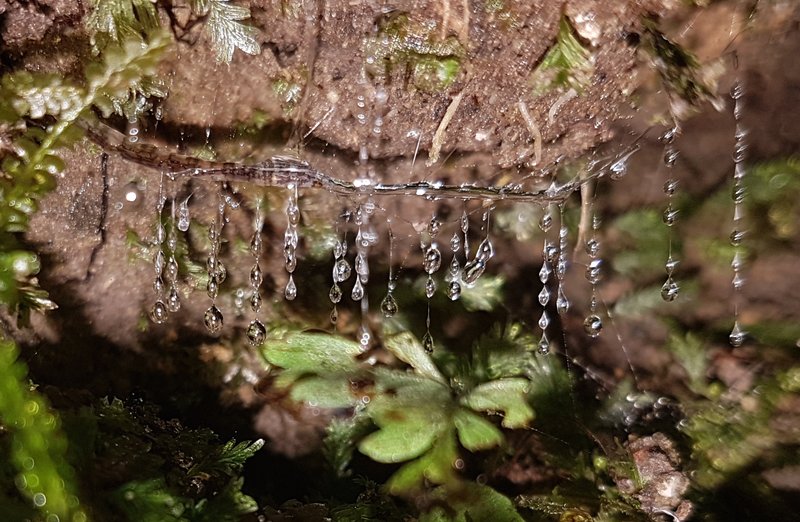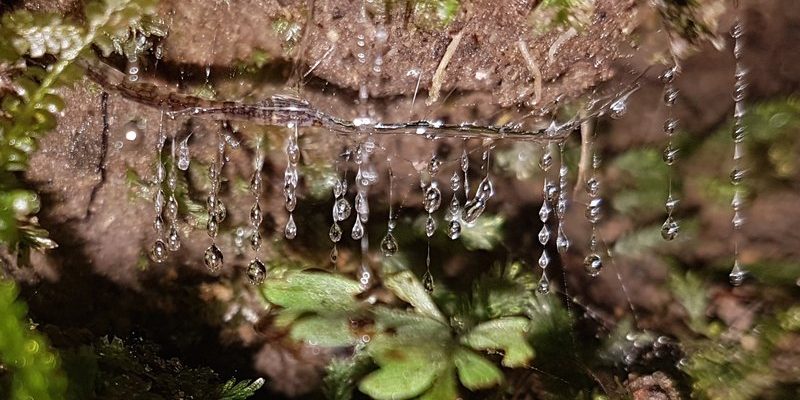
You might be wondering why leaf litter is so important for these bioluminescent beings. Well, think of leaf litter as a cozy blanket: it offers shelter, food, and a place to grow. Without this rich layer of organic material, glow worms would struggle to survive. Understanding this relationship isn’t just an academic exercise; it helps us appreciate the delicate balance of ecosystems and the role each species plays.
What Are Glow Worms?
Glow worms, primarily found in damp, dark environments, are not worms at all. They are the larval stage of beetles belonging to the Lampyridae family—yes, the same family that includes fireflies! These creatures produce light through a process called bioluminescence, which is nature’s way of creating a little magic in the darkness.
When you see that soft glow, it’s usually their way of attracting prey. In their case, the light lures unsuspecting insects into slime threads they’ve spun—a rather clever hunting technique. This light can also deter predators, as it signifies that the glow worm is unappetizing or toxic. So, in a sense, glow worms are like tiny lighthouses that help guide their dinner right into their traps while simultaneously warning off threats.
The Role of Leaf Litter in Ecosystems
Leaf litter is more than just a collection of fallen leaves; it’s a vital layer of the forest floor that plays various roles in the ecosystem. First off, it acts as a natural mulch, helping to retain moisture in the soil. This is crucial for many plants and organisms, including our glow worms, as they thrive in humid environments.
Additionally, leaf litter serves as a habitat for countless organisms, from fungi to insects. When leaves decompose, they provide nutrients that enrich the soil, creating a thriving environment for plants and other organisms. By breaking down, leaf litter supports a complex web of life, working together to sustain the ecosystem.
How Glow Worms Benefit from Leaf Litter
Glow worms have specific needs, and leaf litter meets many of them effectively. For starters, the moisture retained in this layer creates the perfect humidity for glow worms to thrive. Without enough moisture, these tiny creatures struggle to grow and reproduce—much like how a plant wilts without water.
Furthermore, leaf litter provides shelter from predators. It offers a safe space for glow worms to hide and develop without falling prey to hungry birds or other creatures. Essentially, leaf litter acts as both a home and a hunting ground, creating an ideal habitat for these luminous larvae.
Why This Habitat Relationship Matters
The relationship between glow worms and leaf litter is a reminder of how interconnected life is. When leaf litter is disturbed—due to deforestation, urbanization, or climate change—it can have knock-on effects. Without enough leaf litter, glow worms may struggle to find food, moisture, or safe shelter, leading to declining populations.
Ultimately, this situation can disrupt the entire ecosystem. Glow worms are part of a larger food web, playing a role in controlling insect populations. If they decline, we might see an increase in the very pests they help keep in check. Protecting leaf litter habitats isn’t just about saving glow worms; it’s about maintaining the health of our forests as a whole.
How to Help Glow Worms Thrive
You can’t see glow worms flitting about in your living room, but there are ways you can support them in their natural habitats. Here are some simple actions you can take:
- Reduce Pollution: Lowering your carbon footprint helps combat climate change, which can impact moisture levels in forests.
- Use Less Plastic: Plastic pollution can clog waterways and disrupt ecosystems, including leaf litter habitats.
- Support Conservation Efforts: Get involved with local groups dedicated to preserving habitats where glow worms dwell.
Let’s remember that every little bit helps. By protecting the environment, we’re not just saving tiny glow worms; we’re preserving the beauty and complexity of our ecosystems.
Exploring Glow Worms in Nature
If you’re up for an adventure, consider visiting a location known for glow worms. Many parks and nature reserves offer guided night walks, allowing you to see these magical insects in their natural habitat. It’s an experience that combines nature with a sprinkle of wonder.
Just keep in mind: respect the environment. Stick to paths, avoid disturbing leaf litter, and when observing these little wonders, maintain a safe distance. You’re witnessing a delicate balance in action, and it’s essential to keep it that way.
Understanding the relationship between glow worms and leaf litter opens up a world of appreciation for nature’s intricate web. These tiny creatures remind us of the delicate balance within our ecosystems. By valuing and protecting their unique habitats, we help ensure the survival of not only glow worms but a vast array of life that depends on healthy forests. So next time you see a glow worm lighting up the night, you’ll know just how much it owes to the humble leaf litter beneath its glow.

